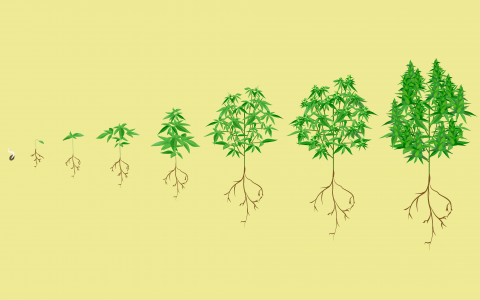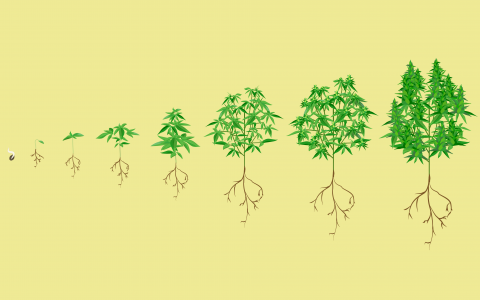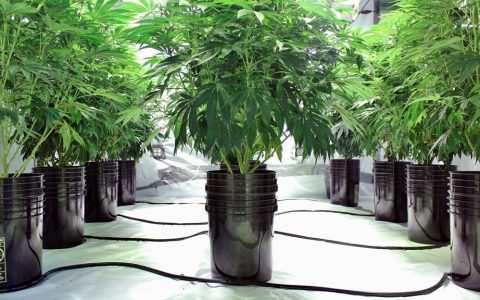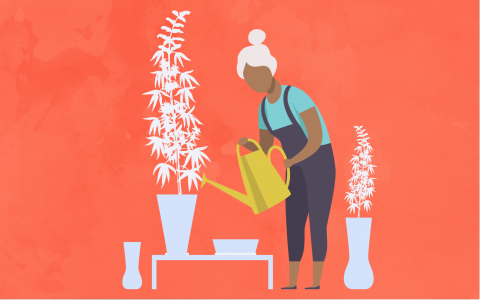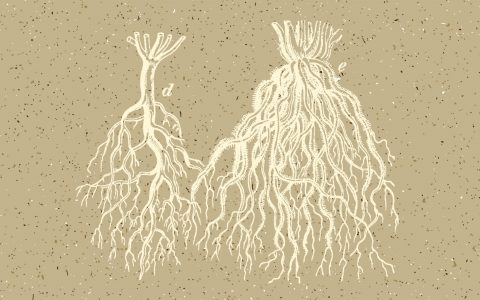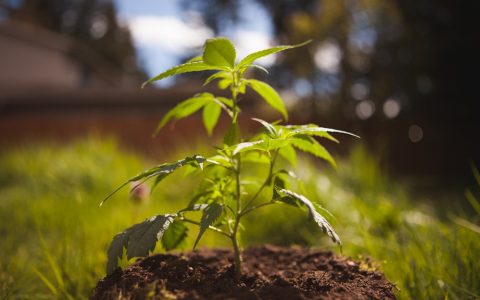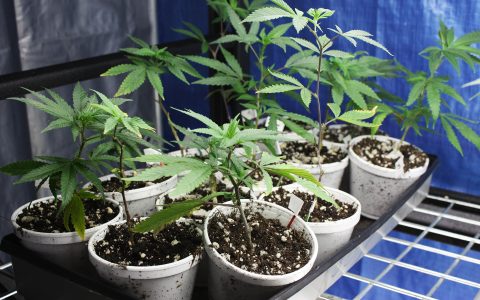Cannabis is an annual flowering plant, its life cycle limited to just one flowering season. Once that season ends, the plant will senesce and die, its seeds responsible for carrying genes through to another growing season.
But it’s possible to hack this process to give a cannabis plant a second growing season. A grower can manipulate a plant, forcing it to revert from the flowering state back to the vegetative state again.
This process is known as re-vegging, and it’s simple and easy to do.
Why Re-Veg a Cannabis Plant?
Cannabis displays a short-day photoperiod, meaning that it transitions from a vegetative period to a flowering period because it tracks darkness with internal monitoring.
When days become shorter and nights become longer—as in autumn—cannabis will naturally change into the flowering cycle and begin producing either female (pistils) or male (stamens) sex organs.
Once flowering, cannabis will mature—the point at which you harvest—senesce, and then die. Re-vegging allows you to harvest buds from your plant and then grow the same plant again for a second harvest.
Here are some other reasons why you may want to re-veg your cannabis plant:
Preserve a Phenotype
Proactive growers typically take clones of a plant prior to flipping it into a flowering state. But if a grower neglects to take clones at this time for any reason, that particular phenotype will get lost once it is flipped into flower. Re-vegging is the only way to preserve an exact replica of a particular phenotype once it has transitioned into the flowering state.
Re-vegging is the only way to preserve an exact replica of a particular phenotype once it has transitioned into the flowering state.
Eliminate the Mother Plant
Growers sometimes keep mother plants, which stay in the vegetative stage all the time, and pull clones directly from the mother, flipping those clones into the flowering phase when they are big enough.
But keeping mother plants takes time and space. A lot of growers choose to get rid of mother plants as they won’t produce any buds and they take up time and space.
Re-vegging allows you to get rid of mother plants, freeing up space in your grow for plants that only produce buds. It also saves time and resources, as you won’t have to tend to the mother plants.
Reduce Vegetative Periods
A plant that has undergone a full growing season will have a complex and robust root system. These plants can move through the vegetative phase quicker the second time around with their mature root systems, whereas clones and young plants will take longer to establish roots.
Growers looking for a faster turnover during the growing season may find that re-vegging plants can eliminate the long waiting periods that clones and seedlings need to develop strong root systems.
Increase Plant Yields
The process of taking a clone from a flowering plant is a re-vegging technique known as “monster-cropping,” and it can produce more vigorous and bushier plants.
If done correctly, monster-cropped clones have the potential to create plants with higher yields the second time around because of an increased vegetative mass, stronger stems and branches, and more node points for potential buds.
How to Re-Veg a Cannabis Plant
There are a few ways that a cannabis plant can revert from a flowering period back to a vegetative period.
Post-Harvest Re-Vegging
Probably the easiest method, this will allow you to harvest a plant for buds and then re-veg it for a second growing season.
When harvesting, leave a few healthy flowers and branches in tact at the base of the plant. Readjust the plant’s photoperiod back to a 18/6 cycle (hours of light/hours of dark) from the 12/12 photoperiod it had when flowering.
You’ll also want to change its nutrient regimen, giving the plant nutrients more conducive to early-stage growth. It will need more of a nitrogen-heavy diet for root and leaf development, as opposed to the high amounts of potassium and phosphorus that it likely received during flowering.
Early growth on a re-vegged plant may exhibit stress-induced mutations like single-fingered leafs and odd node patterning, but these issues should go away after a few weeks, once the plant regains its bearings.
Post-harvest re-veg plants often take a little bit of time to take off at first and some strains may not even be receptive to this method at all. But plants that are re-vegged successfully have been known to display increased vigor after the initial transition.
Monster-Cropping Clones
As mentioned above, cloning a plant while it’s in the flowering stage is called monster-cropping. To successfully do this, take clones from the lower branches of a plant when it’s in the second or third week of flowering.
Take a clone as you normally would, but be sure to remove all visible flowering nodes from each clone. This will improve the clone’s ability to root out by halting flower production within the cutting.
As with post-harvest re-vegging, monster-cropping may result in stunted and mutated growth at first, but with proper care and training, this method can produce massive plants with increased vigor and foliage growth.
Accidental Re-Vegging
Cannabis plants will unexpectedly revert back to vegetative growth if there is any disturbance in their dark photoperiod (if they aren’t in darkness for at least 12 hours a day).
This can occur both indoors and outdoors, usually because of a light leak or a light-timer malfunction for indoor growers, or from planting outside too early in the season for outdoor growers.
Even the tiniest of changes in a cannabis plant’s light cycle can cause it to flip back to a vegetative state, and some plants may even turn hermaphroditic, growing both male pollen sacs and female flowers.


